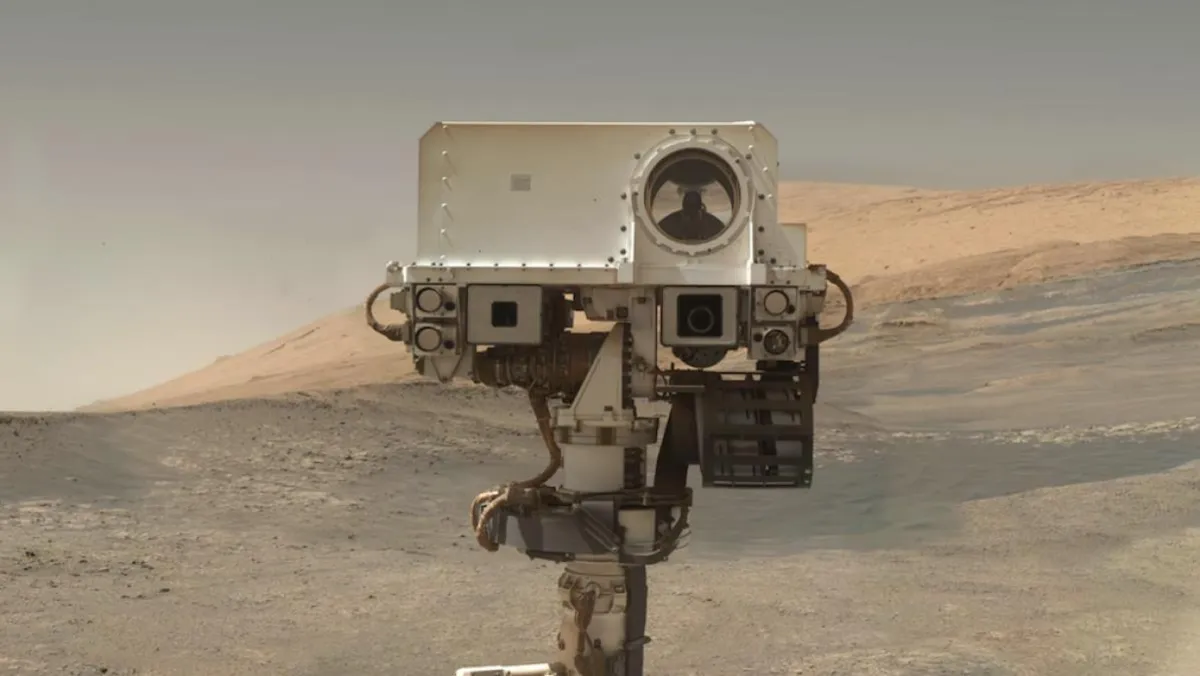
Tens of millions of miles beyond Earth, a nuclear-powered rover the size of a car is making its way up the slopes of a Martian mountain. NASA's Curiosity rover has been on a mission to explore Mars' intriguing past since its landing in 2012. Throughout its journey, Curiosity has captured an astounding 683,790 images while traversing approximately 21 miles of harsh Martian terrain. A recent photograph showcases the rover overlooking the vast, desolate wilderness of Mars.
About 3.7 billion years ago, a colossal object collided with Mars, resulting in the formation of the 96-mile-wide Gale Crater that we observe today. Following this catastrophic impact, the region's surface rebounded, giving rise to a central peak known as Mount Sharp. This peak is significant as it holds layers that reveal the planet’s watery history. From its current position at the foothills of the 3.4-mile-high mountain, Curiosity provides a breathtaking view over the expansive plains known as Aeolis Palus, as well as the hilly formations that border Gale Crater.
The latest view captured by Curiosity on March 18, 2025, marks the rover's 4,484th Martian day, referred to as a Sol. A Martian Sol is slightly longer than an Earth day, lasting 24 hours and 39 minutes.
Currently, Mars is recognized as being 1,000 times drier than the most arid desert on Earth. However, data collected by NASA and other space agencies indicate that this was not always the case. Historical evidence suggests that a vast ocean may have once covered significant portions of Mars, with lakes feeding into rivers and streams.
As Curiosity ascends Mount Sharp, it has uncovered rocks containing minerals like sulphates, which provide insights into the timeline of Mars' drying process. The rover has also discovered ripple formations on the Martian surface, strong indicators of small waves that once lapped against ancient lake shores billions of years ago. Such observations imply that Mars was once a warm, wet world, potentially capable of supporting life before gradually transforming into the cold, arid landscape we see today.
The evidence gathered from Gale Crater and other sites on Mars suggests that this region could have been a viable habitat for life, should it have ever existed. While NASA has yet to find definitive proof of microbial life on Mars, the Perseverance rover, Curiosity's robotic counterpart, has collected intriguing rock samples that may provide clues to past microbial activity. These samples are set to be returned to Earth for further analysis.
As of now, Curiosity is en route to a new destination on Mount Sharp, where it will investigate a region characterized by spectacular boxworks formations. From an aerial perspective, these formations resemble intricate spiderwebs. Scientists believe these structures formed when minerals, transported by the last flows of water from Mount Sharp, settled into cracks in the surface rock and subsequently hardened. As erosion took its toll, the minerals that solidified in the fractures remained, resulting in the distinctive web-like patterns.
The ongoing exploration of these boxworks raises questions about what additional discoveries Curiosity might make. As the rover continues its mission, the scientific community eagerly anticipates the insights that will emerge from this relentless pursuit of knowledge about Mars and its potential to host life.
Godspeed, Curiosity!